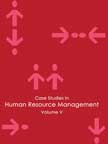Training Employees of IBM Through e-Learning
|
|
ICMR HOME | Case Studies Collection
Case Details:
Case Code : HROB030
Case Length : 14 Pages
Period : 1990 - 2002
Pub Date : 2003
Teaching Note :Not Available
Organization : IBM
Industry : Information Technology
Countries : USA
To download Training Employees of IBM Through e-Learning case study
(Case Code: HROB030) click on the button below, and select the case from the list of available cases:

Price:
For delivery in electronic format: Rs. 400;
For delivery through courier (within India): Rs. 400 + Shipping & Handling Charges extra
» Human Resource and Organization Behavior Case Studies
» HRM Short Case Studies
» View Detailed Pricing Info
» How To Order This Case
» Business Case Studies
» Area Specific Case Studies
» Industry Wise Case Studies
» Company Wise Case Studies

Please note:
This case study was compiled from published sources, and is intended to be used as a basis for class discussion. It is not intended to illustrate either effective or ineffective handling of a management situation. Nor is it a primary information source.
Chat with us

Please leave your feedback

|
|




<< Previous
"E-learning is a technology area that often has both
first-tier benefits, such as reduced travel costs, and second-tier benefits,
such as increased employee performance that directly impacts profitability."
- Rebecca Wettemann, research director for Nucleus Research.1
Introduction
|
In 2002, the International Business Machines Corporation (IBM)2
was ranked fourth by the Training3
magazine on its 'The 2002 Training Top 100' list (Refer Exhibit I). The magazine
ranked companies based on their commitment4
towards workforce development and training imparted to employees even during
periods of financial uncertainty.
Since its inception, IBM had been focusing on human resources development. The
company concentrated on the education and training of its employees as an
integral part of their development. During the mid 1990s, IBM reportedly spent
about $1 billion for training its employees.
|

|
However, in the late 1990s, IBM undertook a cost cutting drive, and started
looking for ways to train its employees effectively at lower costs.
|
|
After considerable research, in 1999, IBM decided to
use e-learning (Refer Exhibit II) to train its employees. Initially,
e-learning was used to train IBM's newly recruited managers.
IBM saved millions of dollars by training employees through
e-learning. E-learning also created a better learning environment
for the company's employees, compared to the traditional training
methods. The company reportedly saved about $166 million within one
year of implementing the e-learning program for training its
employees all over the world. The figure rose to $350 million in
2001. |
Training Employees of IBM Through e-Learning
- Next Page>>
|
|










